Difference between HTC Windows 8X and Blackberry Z10
Key Difference: The HTC Windows 8X sports a 4.3- inch S-LCD2 capacitive touchscreen that provides a pixel density of 342ppi. The screen is protected using gorilla glass 2, which makes it pretty durable and less prone to scratches. The phone is pretty slick and slim, weighing only 130 grams with the battery. The Blackberry Z10 is the latest smartphone that has been released in January 2013 by Research in Motion. The Z10 is a bar phone that is available with a 4.2 inch capacitive touch screen that has approximately 355 ppi pixel density, providing a clear and sharp display. If supports a 1.5 GHz Dual-core Krait, 2GB RAM with 16 GB internal storage capacity and expandable capacity up to 64 GB.
 HTC originally made many phones with Windows OS, before shifting its products to Android for drawing in more customers and profits. Recently, HTC has put focus on helping Windows boost its product range with the new HTC Windows 8X and the 8S phones. The phones are set to give direct competition to the Androids and the iPhones. The company has set out to prove that Windows can be just as stylish and productive as the other phones in the market. HTC has incorporated some of its best technologies on the Windows 8X. The phone was released in November 2012 and has been proven a success with many people.
HTC originally made many phones with Windows OS, before shifting its products to Android for drawing in more customers and profits. Recently, HTC has put focus on helping Windows boost its product range with the new HTC Windows 8X and the 8S phones. The phones are set to give direct competition to the Androids and the iPhones. The company has set out to prove that Windows can be just as stylish and productive as the other phones in the market. HTC has incorporated some of its best technologies on the Windows 8X. The phone was released in November 2012 and has been proven a success with many people.
The HTC Windows 8X sports a 4.3- inch S-LCD2 capacitive touchscreen that provides a pixel density of 342ppi. The screen is protected using gorilla glass 2, which makes it pretty durable and less prone to scratches. The screen itself has an excellent resolution and provides more ppi than the iPhone, giving the users a crisp, clear and sharp display screen. The phone is pretty slick and slim, weighing only 130 grams with the battery. The phone is encased in a polycarbonate chassis that is also durable and does not scratch easy. The matte finish on the back provides a firmer grip on the phone. The power/lock key is located on the top of the phone, while the tray with pin release hole, a volume rocker, and a camera button is placed on the right side of the device. The left side is bare and the bottom holds the charging socket and the primary mic. The buttons are said to be a little too flush, making it difficult to locate them on the screen by touch and even harder to press them.
Under the hood, the device is powered by 1.5 GHz Dual-core Qualcomm processor. It offers the Windows 8 OS, with the live tiles that are customizable based on the user’s preferences. The device offers 1 GB RAM and an internal storage capacity of 16 GB. This is one of the downfalls of the phone, as the 16 GB (minus the space required for internal software) is all the user gets for storage, as the device does not support SD cards. The device supports 2G and 3G networks in all areas of the world, while 4G is only available in certain countries such as the US.
The device houses an 8 MP rear camera for taking pictures and a 2.1 MP front camera for video calls. The rear camera comes with autofocus, BSI sensor and LED Flash, while the front camera has unlta-wide angle for allow more details to fit in the picture. The Ultra-wide angle is one of the newest features that is being offered in very few phones. Similar to other HTC phones the device comes with Beats Audio enhancement to make listening to movies and audio an unbelievable experience. In addition to Beats Audio, the device also comes with a built-in amp. The device has a non-removable 1800 mAh battery, a little less than the other phones available on the market. The major downfall with a Windows phone for many people is the lack of apps. However, the number of apps available in the Windows Store is growing slowly and should not be a problem for a long time.
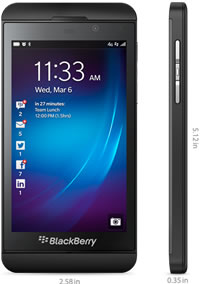
The Blackberry Z10 is the latest smartphone that has been released in January 2013 by Research in Motion. The phone is powered by the company’s BB10 and is believed to be the company’s latest attempts to capture the smartphone market. The Z10 is a bar phone that is available with a 4.2 inch capacitive touch screen that has approximately 355 ppi pixel density, providing a clear and sharp display. The phone is also light in weight and perfect for one-hand operation. If supports a 1.5 GHz Dual-core Krait, 2GB RAM with 16 GB internal storage capacity and expandable capacity up to 64 GB. The Z10 has an 8MP auto-focus camera along with 2MP front-facing camera for video conferencing. The camera offers a new Time Shift mode that allows users to pinpoint and adjust individual elements of a picture.
The users can interact with the OS using gestures such as swipe, tap, pinch, and reverse pinch. The phone comes with a few new features such as Hub, Balance, Story Maker and Remember. The Hub is a screen that is available by swiping left after the first menu page and task switcher and it is creates a single point where the user can check all updates from SMS, e-mail to facebook notifications. It also offers the users to post messages, update twitter, facebook and any other services. BlackBerry Balance is a feature that allows people to separate their work life from their personal life. It allows easy access to creating two separate profiles, where work related and personal related profiles can be kept separate and maintained. Story Maker is an app that allows users to create a story by selecting photos and an audio clip to go along with it. The app will automatically create a video and will also include effects. The new keyboard on the Z10 has an adaptive feature that learns as the user types words and also suggests future words that can be used making typing e-mails and messages easier. Many reviews do state that one of the downfalls of the phone is the camera as well as lack of apps. The camera is not as sharp as it could be and the phone does not offer many apps in the BlackBerry World store.
The information for the detailed table about the two phones has been taken from HTC website, guardian.co.uk, Blackberry website and GSMArena.com.
|
|
HTC Windows 8X |
BlackBerry Z10 |
|
Launch Date |
November 2012 |
January 2013 |
|
Company |
HTC |
Research In Motion |
|
Size |
132.35 x 66.2 x 10.12 mm |
130 x 65.6 x 9 mm |
|
Display |
4.3-inches S-LCD2 capacitive touchscreen |
4.2 inches capacitive touchscreen |
|
Screen |
720 x 1280 pixels (~342 ppi pixel density) |
768 x 1280 pixels (~355 ppi pixel density), 16 million colors |
|
Protection |
Gorilla Glass 2 |
Password protection, screen lock, and sleep mode, BlackBerry® Balance™ offering dedicated profiles to keep work and personal data separate and secure. |
|
Weight |
130 grams |
137.5 g (4.83 oz) |
|
2G Network |
GSM 850 / 900 / 1800 / 1900 |
GSM 850 / 900 / 1800 / 1900 - all versions |
|
3G Network |
HSDPA 850 / 900 / 1900 / 2100 HSDPA 850 / 1900 / 2100 - for AT&T |
HSDPA 850 / 900 / 1900 / 2100 - STL100-1 HSDPA 850 / 900 / 2100 - STL100-2 |
|
4G Network |
LTE 700 MHz Class 17 / 850 / 1700 / 1900 / 2100 |
LTE 800 / 900 / 1800 / 2600 - STL100-2 |
|
GUI |
Windows Phone 8 UI |
Blackberry UI |
|
CPU speed |
1.5 GHz Dual-core Qualcomm Krait |
1.5 GHz Dual-core Krait |
|
GPU |
Adreno 225 |
Adreno 225 |
|
OS |
Windows Phone 8 |
BlackBerry 10 OS |
|
Chipset |
Qualcomm MSM8960 Snapdragon |
Qualcomm MSM8960 Snapdragon |
|
RAM |
1 GB |
2 GB RAM |
|
SIM Size |
microSIM |
microSIM |
|
Internal Memory |
16 GB |
16 GB |
|
Expandable Memory |
No |
Up to 64 GB |
|
Sensors |
G-Sensor, Digital compass, Proximity sensor, Ambient light sensor |
Accelerometer, magnetometer, proximity sensor, gyroscope, ambient light sensor |
|
Connectivity |
3.5 mm stereo audio jack, NFC capable, Bluetooth® 3.1, Wi-Fi®: IEEE 802.11 a/b/g/n |
Wi-Fi, 2G, 3G, 4G, NFC, Bluetooth 4.0 and microUSB 2.0. |
|
Data |
GPRS, EDGE, WLAN, Bluetooth, NFC, USB |
GPRS, EDGE, WLAN, Bluetooth, NFC and USB |
|
Speed |
HSPA+; LTE, Cat3, 50 Mbps UL, 100 Mbps DL (LTE only for AT&T version) |
HSDPA 21 Mbps, HSUPA 5.76 Mbps; LTE, EV-DO Rev. A, up to 3.1 Mbps |
|
WLAN |
Wi-Fi 802.11 a/b/g/n, dual-band |
Wi-Fi 802.11 a/b/g/n, dual band |
|
Bluetooth |
Bluetooth v3.1 with A2DP, EDR |
Bluetooth v4.0 with A2DP, LE |
|
USB |
microUSB v2.0 |
microUSB v2.0. |
|
Primary Camera |
8MP 3264 x 2448 pixels rear camera |
8 megapixel auto-focus camera |
|
Secondary Camera |
2.1 MP front camera |
2 megapixel fixed-focus camera with image and video stabilization, 3x digital zoom and 720p HD video recording |
|
Video |
1080p@30fps |
1080p HD video recording with 4 DOF (Degrees of freedom) video stabilization |
|
Camera Features |
|
|
|
Sound Enhancement |
Beats Audio Built-in amp |
No |
|
Audio supported formats |
.aac, .amr, .m4a, .mp3, .wav, .asf, .wma (verison 9 and 10) |
3GP, 3GP2, WMA, MP3, MKA, AAC, AMR, F4V, WAV, MP2PS, MP2TS, AWB, OGG, FLAC |
|
Video supported formats |
.3gp, .3g2, .mp4, m4v, asf, .wmv (version 9 and 10) |
M4A, M4V, MOV, MP4, MKV, MPEG-4, AVI, ASF, WMV, |
|
Battery Capacity |
Non-removable Li-ion Polymer 1800 mAh |
Li-Ion 1800 mAh battery |
|
Talktime |
No official data released |
3G: Up to 10 hours |
|
Standby Time |
No official data released |
3G: Up to 13 days (312 hours) |
|
Available Colors |
California Blue, Graphite Black, Flame Red, Limelight Yellow |
Black, white |
|
Messaging |
SMS (threaded view), MMS, Email, IM, Push Email |
SMS, MMS, Email, Push Email, IM, BBM 6 |
|
Browser |
HTML5 |
HTML5 |
|
Radio |
No |
No |
|
GPS |
Internal GPS antenna with GLONASS |
Yes, with A-GPS support |
|
Java |
No |
MIDP 2.1 |
|
Additional Features |
|
|
Image Courtesy: htc.com, us.blackberry.com





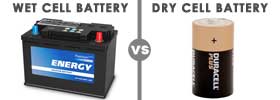
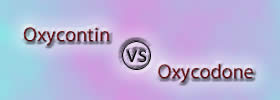
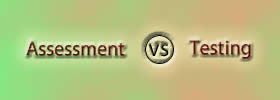
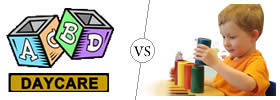
Add new comment